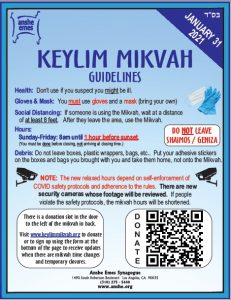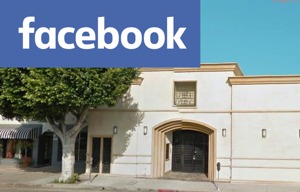 Pekudei 5757
Pekudei 5757
I. Summary
Construction of the Mishkon. At Moshe’s command, the total cost of the Sanctuary construction was computed. The work was approved and inspected by Moshe, who blessed the people for their assistance in this magnificent achievement. On the first day of the month of Nissan, almost a year after the Jews’ departure from Egypt, the Mishkon was erected under Moshe’s personal supervision and its contents were arranged in the prescribed order. A cloud covered the Mishkon, which was suffused with Hashem’s Glory. Whenever the cloud lifted, it signaled Hashem’s desire that the Israelites continue their journey.
II. Divrei Torah
A. Lil’Mode U’lilamed (Rabbi Mordechai Katz)
1. Moshe under suspicion. What was the primary reason for Moshe’s detailed accounting of the costs of the Sanctuary? Chazal commented that there were apparently some who suspected that Moshe might have kept some of their Sanctuary contributions for his own use. Accordingly, he responded by showing one and all that every single coin and article contributed was indeed used for the Sanctuary. This illustrates the importance of not judging another person hastily. This lesson is also illustrated by the following two stories:
a. Two valid witnesses appeared before the Rabbinical Court to testify that they had seen Rabbi Bunim eating cake and coffee on Yom Kippur. The Rabbis investigated the matter and found out exactly what had happened. Rabbi Bunim’s daughter-in-law gave birth right before Yom Kippur. About an hour into Yom Kippur, Rabbi Bunim asked her if she had eaten anything as one is required to eat despite the fast in such circumstances. When he was told that she refused to eat because it was Yom Kippur, he insisted that she take some refreshments. She refused to eat unless her father-in-law personally gave her the food. Since this was a matter of saving a life, Rabbi Bunim took cake and coffee in hand and brought them to her. Just at that moment, the two witnesses looked out the window and saw the Rabbi carrying the food and mistakenly assumed that he was going to eat the food himself.
b. Rabbi Aryeh Levin was well known for his care in judging everyone favorably. He once related to somehow how he acquired this attribute: “It happened when I attended the funeral of Rabbi Eliezer Rivlin, a prominent treasurer of charity funds in Jerusalem. The deceased has an intimate friend, Rabbi Shmuel Kook, with whom he has worked for 30 years. When the funeral procession began, I noticed Rabbi Kook enter a flower shop and buy a flower pot. I was shocked and went over to Rabbi Kook to rebuke him. Is this the way you add to the funeral of a life-long friend?’ I censured him, Couldn’t you find a more appropriate time to buy a flower pot?’ Rabbi Kook then explained his behavior. He had befriended someone who was hospitalized with a highly contagious disease and had died the day before. The doctors, who were not Jewish, ordered that all of his belongings be burned. When Rabbi Kook heard about the orders, he pleaded with the doctors not to burn the man’s Tefillin, but to allow him them to be carefully buried instead. The doctors agreed that if he obtained a earthenware pot they would permit the Tefillin to be buried in it. But, they warned him that he only had until 12 noon. Therefore, he had to leave the funeral procession of his best friend in order to meet the deadline. “At that moment, I made a resolution to always judge others favorably.”
2. The Aron and the flask of Mun. We find that both the Aron (holy Ark) and a container of Mun (Manna, food from Heaven) were hidden. Why were these two specific items hidden? Certainly, the Aron which contained the holy Torah written on Mt. Sinai was too sanctified to be open to full public view. However, the Mun was gathered by the people regularly. Why, then, was the Mun with the Aron in this regard? We learn from this that the Aron and Mun are symbolic of two aspects of life. The former represents the spiritual qualities, while the latter (being food necessary for the body) represents materialism. Both are necessary if life is to flourish. Chazal have commented, “if there is no flour, there is no Torah. If there is no Torah, there is no flour.” (Pirke Avos 3:17) In other words, we can not exist physically and learn Torah if we do not at the same time tend to our bodily needs; at the same time, if we disregard the Torah, then our physical existence becomes meaningless. It is for this reason that the Aron and Mun were associated — the aspects of life that they symbolize must be unified.
B. Growth Through Torah (Rabbi Zelig Pliskin)
1. Everyone can fall prey to envy, but one can overcome it. After being told to anoint Aharon, Moshe was told in reference to Aharon’s sons, “and you shall anoint them as you anointed their father.” Rabbi Meir Simcha HaCohen explained that when Moshe was told to anoint his brother Aharon, he was able to do so with a complete heart. Moshe, the younger brother, was the leader of the Israelites and was happy that his brother was the High Priest. But, in reference to Aharon’s sons the situation was different. Moshe’s own sons were not going to succeed him as leaders. Thus, when it came to anointing sons, Moshe might have felt envy. Therefore, Hashem told Moshe to anoint Aharon’s sons with the same whole-heartedness and joy with which he anointed their father (Meshech Chochmah). Even someone as great as Moshe must internalize attitudes to overcome envy. Moreover, we see that it is possible to see joy and enthusiasm for another person’s success, even if that person has something that you do not.
2. Focus on doing the will of Hashem. “And Moshe did all that Hashem commanded him, that is what he did.” Moshe’s motivation in all that he did for the Sanctuary was for Hashem’s honor. Even though he personally would gain from the construction of the Mishkon, for Hashem would communicate with him there, he was not motivated by thoughts of his own glory. Nor was he motivated by thoughts of the honor of his brother Aharon, who was to be the High Priest. Moshe focused solely on doing Hashem’s will. This is a most difficult task — to do something for which you will receive a personal benefit, yet still have pure motivations.
C. Wellsprings of Torah (Rabbi Alexander Zusia Friedman)
1. The purpose of gold. “All the gold that was used for the work in all the work of the Sanctuary . . . ” (An alternative reading: “all the gold that was made for the work in all the holy work.”) This implies that gold was put into the world only so that man should use it for good and sacred purposes. (Tiferet Yonathon)
2. A Hundred Blessings. The number of sockets needed for the Mishkon was 100, the same number of the blessings which must be recited daily. This implies that just as the sockets served as the foundation of the Mishkon, the daily blessings provide the foundation of the sanctity of the Jewish individual. (Hiddushei Harim)
D. Darash Moshe (Rav Moshe Feinstein, z’tl)
An accounting of our blessings. “These are the reckonings of the Tabernacle.” The accounting of the various materials donated for the Mishkon interrupts between the narrative of the construction of the Mishkon and the fabrication of the priestly garments, which begin afterwards with the making of the Ephod. This verse holds a profound lesson which can constantly be applied to our lives: just as the artisans had to account for their use of every ounce of materials that was donated for the construction of the Mishkon and its furnishings, so also must we be able to give an accounting for the bounty with which Hashem has blessed us. Did we devote the time and years which Hashem allots us to Torah and mitzvos? Did we use our money and possessions for charity, hospitality and helping people? We should not think that the resources which Hashem gives us are ours to use as we desire. On the contrary, the Torah gives detailed rules governing our conduct and the use of our property. Each of us will be called upon to account as to whether we have used all of the talents and resources which Hashem has provided us to fulfill His will through Torah and mitzvos. A famous story is told in the name of many great Chassidic Rebbes, including Reb Zusia. He often said that after a person dies and ascends to the heavens for judgment, he is required to defend his past actions and behavior. But, he isn’t asked why he wasn’t as great as Moshe, as learned as Rabbi Akiva, etc. Each person has difficult capabilities and is only asked why he didn’t use his G-d-given talents to the fullest — was he as great as he could have been?!
E. Kol Dodi on the Torah (Rabbi Dovid Feinstein)
The connection between mitzvos between man and G-d and mitzvos between man and man. “And they attached the Choshen by the rings to the rings of the Ephod with a thread of Techeiles to be on the Cheishev of the Ephod; the Choshen shall not budge from the Ephod as Hashem has commanded Moshe.” This verse seems to imply that once the Choshen and Ephod were connected, they were never allowed to be separated. Therefore, each time Aharon put them on, it was a single connected garment which had to be slipped over his head. There is interesting symbolism in this commandment not to separate the Choshen from the Ephod once they were connected. Chazal teach that Ephod represented mitzvos between man and G-d, and specifically atoned for the sin of idolatry. The Choshen, on the other hand, represented mitzvos between man and man; specifically, the Choshen atoned for perversion of justice. Generally we say that these two categories are of equal importance and that it is impossible to separate them. Thus, one can’t serve Hashem properly unless his relations with his fellow man are in order. And, conversely, a fear of Hashem is the basis of proper human relations. The fact that High Priest never donned the Choshen without the Ephod highlights the inextricable connection between these two types of mitzvos.
F. Peninim on the Torah (Rabbi A.L. Scheinbaum)
Fulfilling Your Function. “And so Moshe fulfilled the work.” The Parsha concludes with the final account of the erection of the Mishkon. It mandates the precise placement of the Shulchan (table), the Menorah and the Aron Hakodesh (Holy Ark). The entire Parsha is a study in detail, providing the exact description of each vessel and the specific verb used to describe each activity necessary for creating these vessels (e.g.,, “and he gave”; “and he placed”; “and he brought”). HoRav Moshe Swift, z’tl learns out an important lesson from the Torah’s emphasis on each activity. Each person has his own job to perform, and must perform his endeavor of choice to his full potential. Furthermore, everything in Jewish life has its own specified place. The Shulchan was the place for the “bread,” which symbolizes physical needs. The Menorah, alluding to faith, was their source of light. The Aron, which housed the Torah, was representative of Torah study and observance. Each “vessel” is an essential part of Jewish life.
G. Divrei Torah (National Council of Young Israel)
The Four Parshiyot. We read the following four special Shabbos readings in the weeks that precede Pesach: Parshat Shekolim, Parshat Zachor, Parshat Parah and Parshat HaChodesh. Each of these Parshiyot commemorates a specific event, but taken as a whole also form a lesson for the preparation for Pesach and, on a more global level, illustrate the principles necessary for the ultimate redemption of K’lal Yisroel. Specifically, Parshat Shekolim discusses the “machatzit hashekel” (one-half coin), a donation required of every Jew in the time of the Holy Temple and which allowed each Jew to have a portion in the community sacrifices that were sacrificed throughout the year. The concept of the half-shekel evolved to symbolize other charitable deeds and contributions and is used as a metaphor for acts of kindness in our day. Parshat Zachor calls upon us to remember the nation of Amalek and destroy their memory. How are we to combat Amalek? Our only “weapon” is the study of Torah. When Torah is diminished, G-d forbid, Amalek flourishes; however, when Torah is strong, Amalek can not survive. Parshat Parah teaches us that the ashes of the Parah Adumah were the exclusive mechanism by which a person who was “tomah mait” (impure through contact with a dead body) could achieve a status of “tahara” and be eligible to sacrifice the Korban Pesach (Pesach offering). The Parah Adumah’s purpose in purifying B’nei Yisroel so that they might be able to sacrifice the Korbanot as well the entire procedure of carrying the ashes of the Parah Adumah are concepts of “avodah” (service to Hashem). These three Parshiyot together illustrate that, in the words of Pirke Avos, the world depends on three things: Torah, the service of G-d and kind deeds. Finally, there is Parshat HaChodesh, which commemorates the mitzvah of Kiddush HaChodesh (sanctification of the new moon) that was given to B’nei Yisroel for the first time when Hashem, Moshe and Aharon sanctified the month of Nissan while the Jews were still in Egypt. In addition, Parshat HaChodesh reflects the concept of renewal and recommitment, teaching us that it is not enough that we acknowledge the principles of Torah, service of G-d and kind deeds, but that prior to Pesach we must make a rededication to these principles so that we can appropriately celebrate Pesach — the Holiday of our redemption. As our Rabbis teach us: our ancestors were redeemed in the month of Nissan and the future Redemption will also take place during Nissan.
H. Shabbos Stories (Rabbi Shimon Finkelman)
Don’t despair. “These are the reckonings of the Mishkon, the Mishkon of testimony . . . ” As Rabbi Yehudah Zev Segal, the Manchester Rosh Yeshiva explains, the Jewish people were demoralized following the sin of the Golden Calf. In the depths of their hearts, they felt it difficult to believe that they could be forgiven for this sin. Then, Hashem commanded that a Mishkon be built (“and they shall make a Sanctuary for Me, that I may dwell among them”). The fact that the Divine Presence would rest among them was clear proof that they had achieved forgiveness and their hearts were joyous once again. Chazal note that the verse doesn’t say “dwell within it (i.e., the Sanctuary)”, but rather says “dwell among them,” meaning within each and every Jew. A Jew, by living his life according to the Torah, becomes a Mishkon in which the Divine Presence dwells. And, just as the Divine Presence returned to Jewish People so quickly after they had sinned, so too does It return to any Jew who sins and later mends his ways. One who sins must not allow himself to believe that he is beyond hope and can never do proper repentance for his mistakes. The great Chassidic leader, Rav Aaron of Carlin once said, “to despair is not a sin, but despair can lead to worse things than any sin can.” One can always turn oneself around; that is what the gift of repentance is all about.



 Visit the group and request to join.
Visit the group and request to join.
